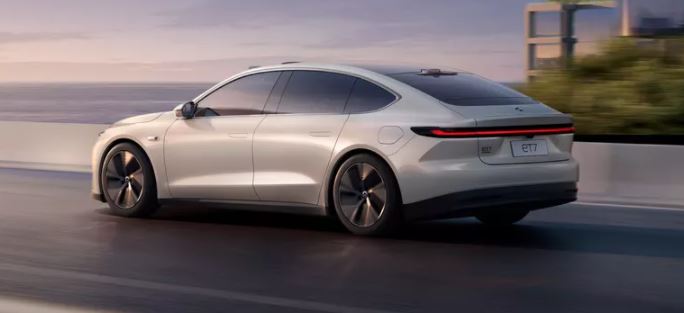Chinese EV maker and NYSE-listed Nio announced to much fanfare the launch of its first battery powered saloon at the company’s annual “Nio-Day” event in Chendou this past Saturday. The car is aimed squarely at Tesla’s Model S and also hopes to eat some of Mercedes-Benz’s S-class and BMW’s 7-series lunch, too. The unimaginatively-named ET7 is set to be priced at £50k for the entry-level model with a release date for China in early 2022. For those not familiar with Nio, the company has been building SUVs for the Chinese market (only) for a few years and has been involved in various capacities in the Formula E-series – an all electric version of Formula 1.
However, a bigger story to come out of Nio Day is the advancement of battery technology to be used in the ET7. Eventually, the company promises a solid state battery to replace more traditional Li-ion batteries as used in basically every other EV on the road today (including their own SUVs and Tesla). Solid state batteries are smaller, lighter, safer, and can hold more charge. As such, it’s no surprise that solid state batteries are considered the holy grail for the entire EV industry. Three battery packs will be available in the ET7 – 70 kWh, 100 kWh and a whopping 150 kWh battery. The big one trumps Tesla’s largest battery by 50 kWh and will give a 620 mile range, albeit using China’s NEDC testing protocol rather than Europe’s newer WLTP test cycle – suffice it to say the acclaimed range could be less. Further, the ET7 is designed so that you can swap out your depleted battery at any of Nio’s Power Swap stations scattered around China (500 such stations to be in operation by the end of this year) with a fully charged pack in just a few minutes. That’s a pretty nifty solution to charging time concerns.
Nio has also announced that the ET7 will be equipped with an advanced autonomous-driving system that includes 11 cameras, 12 ultra sonic sensors and other super cool stuff that only diehard autonomous-driving evangelists will be able to appreciate. Most of the features will be standard, but the company plans to introduce a subscription service to unlock a host of others.
It hasn’t been all smooth sailing for Nio – the company was in a perilous financial position in the early months of last year after spending aggressively on R&D and marketing of their domestic SUVs. They eventually arranged a cash injection of $1 billion in April from various entities led by the municipal government of Hefei. In July they received a further $1.5 billion credit line from various Chinese banks. All this came at a cost, however. Nio was forced to give up a large chunk of voting rights to secure these funds that will likely hamper company strategy decision-making abilities going forward.
The bigger problem for me is that this car, despite its good looks and potentially very impressive range, isn’t set to be released in Europe until the end of 2022. This is basically two years from now. The rate at which new EVs are being introduced to the market by the more established car-makers, with their potential to use solid state batteries, makes me wonder if the Nio ET7 will be arriving to the party with… no where to park.

